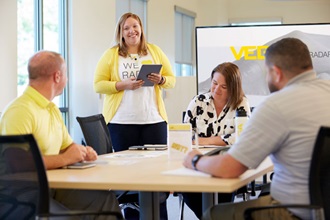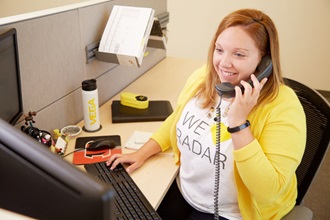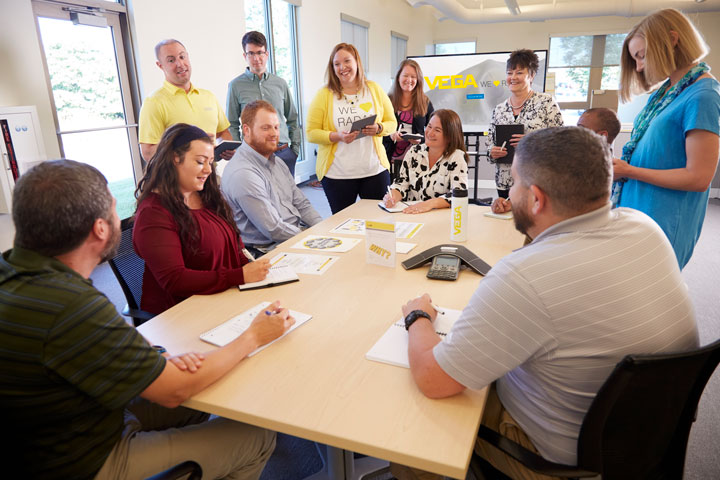Interview: Abby Timon
I’m happy to say I’ve worked at VEGA for five years. I spent about eighteen months as an order administrator, entering incoming purchase orders and getting them over to production, and from there I moved into technical sales. I’ve been a technical sales specialist for three-and-a-half years now.
What does your typical day look like?
As a technical sales specialist, I receive all incoming requests in a given territory, whether they come from end-users or representatives. My territory includes Tennessee, parts of Oklahoma, Arkansas, and New Mexico, and all of Texas. It’s pretty big! I think I interact with over 40 salespeople in addition to end users. My territory is great because I stay busy. I get between 25 and 30 calls and about 100 emails every day. The requests are always coming in; there’s always an opportunity to find a solution and that’s what I love about my job.
The majority of the time, I’m gathering application information so I can help the customer find the proper measurement solution. I also answer questions, help spec out products—whatever I can do to help a customer. Plus, the technical sales specialists and the entire inside sales group have regular meetings to discuss new and better ways to help end-users.
Yes, all of it. When I first started, learning about all of the products was very daunting. I remember I first learned about VEGAFLEX guided wave radar, so I recommended that to everybody in the beginning. But after training and help from the product managers, I grew more comfortable and broadened my horizons. Now I know that for the industries popular in my territory—chemical, oil and gas, refining, etc.—there are certain applications where VEGA products outshine all others. So I made myself with familiar with all of those applications so I am best prepared to help.
Once the VEGAPULS 64 was out, every salesperson wanted to sell it and every end-user wanted to try it. Everyone knew it was a game-changer. If I got 30 calls in a day, 28 of them were about the VEGAPULS 64—it was that hot right out of the gates. And once word got out that it was successful in the field, people were even more excited about it.
Customers love the focusing and the clarity of the signal. It’s great that we can use a radar level sensor to measure in a tank with an agitator, but what end-users get really excited about is using the VEGAPULS 64 with a ball valve. A lot of users in my territory are measuring the level of chemicals and other hazardous liquids. They have to be able separate the sensor from the process using a ball valve, but ball valves create a lot of noise in a through-air level measurement. End users have been asking for a radar gauge that delivers a clear signal with fewer manual edits on a ball valve for years and now they have it with the VEGAPULS 64.
For me, the coolest thing about the VEGAPULS 6 4 is that it can measure just about anything, even liquids with really low DK. Before the VEGAPULS 64, customers had to use guided wave radar to measure low-DK liquids. Guided wave radar is great, but it has to contact the product and that makes it vulnerable. Now we have a non-contact sensor that gets a nice, clear signal without touching the product. And it’s not just a product’s DK that doesn’t matter anymore. You used to have to know the tank type and height and if there was an agitator and if there was foam in the application—you had all these “What ifs.” With the VEGAPULS 64, you don’t have all these “What ifs”; what you have is reliable level measurement.
Export this article
Download as PDFShare this article
Comments ({{comments.length}})
{{getCommentAuthor(comment, "Anonymous")}} {{comment.timestamp | date : "dd.MM.yyyy HH:mm" }}
{{comment.comment}}




